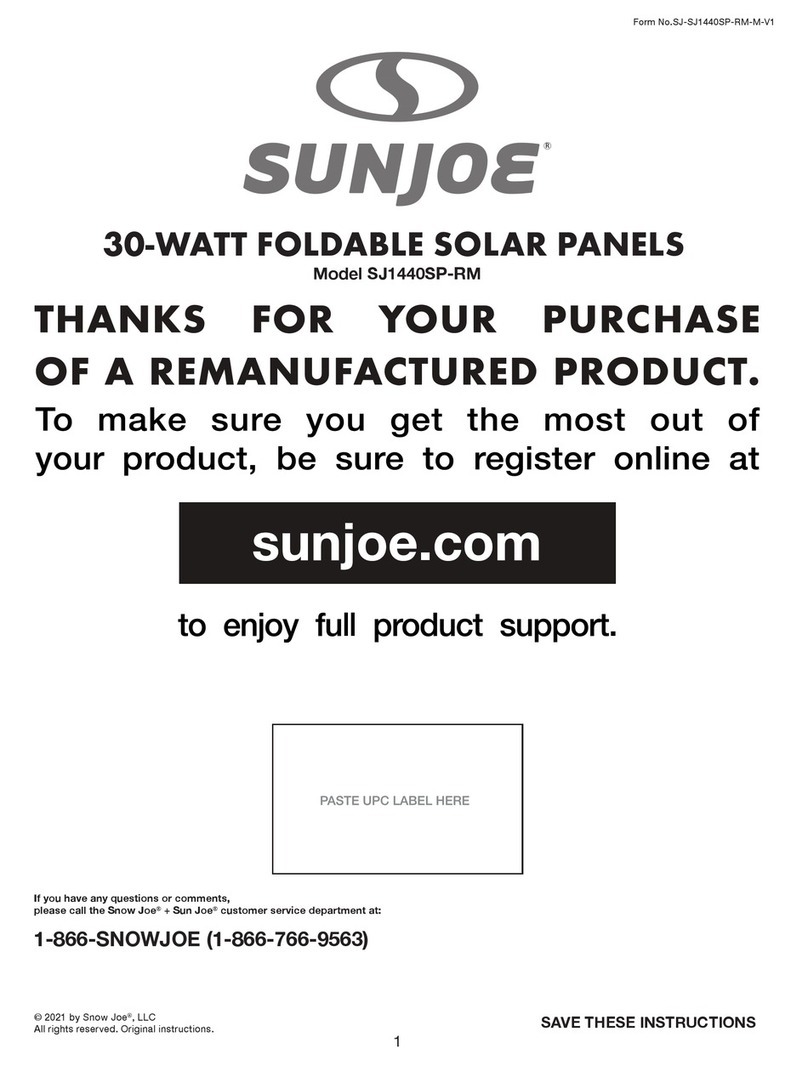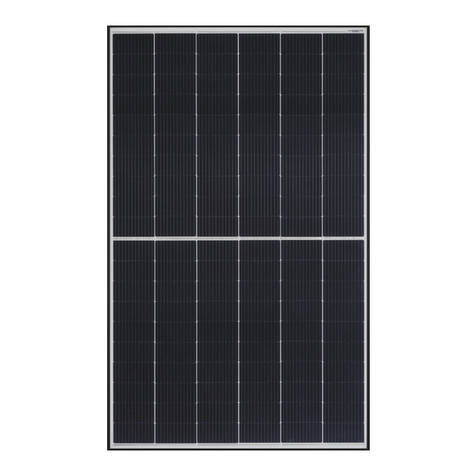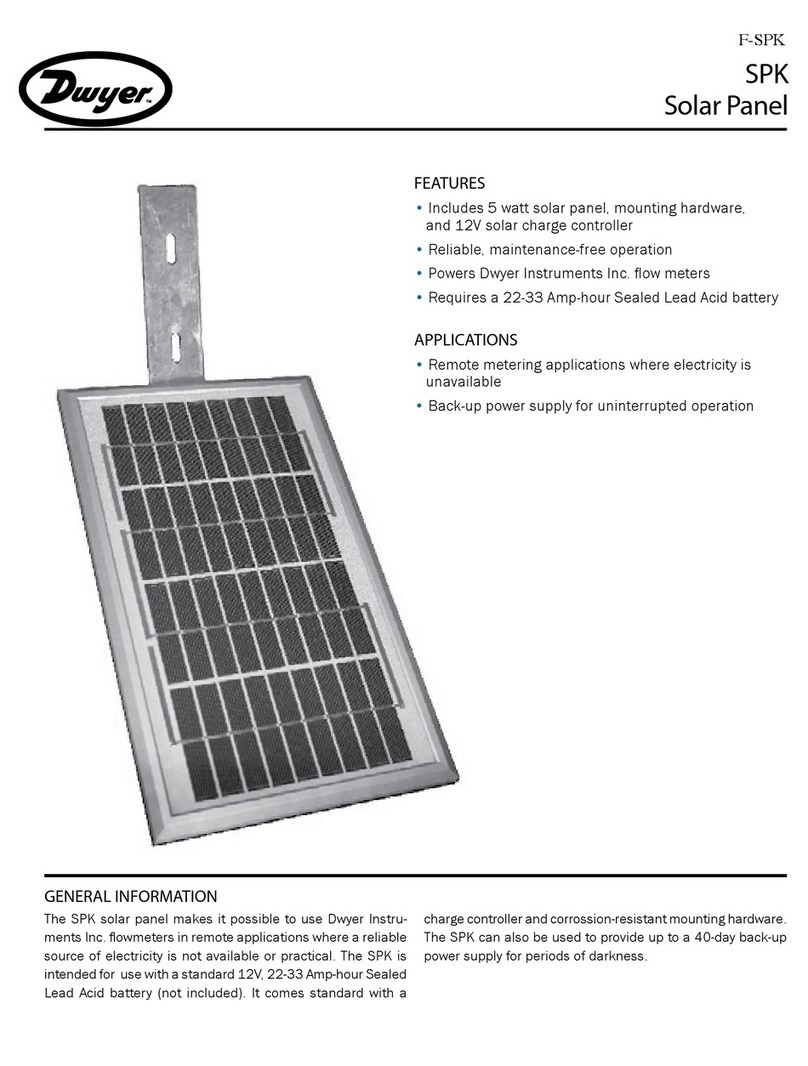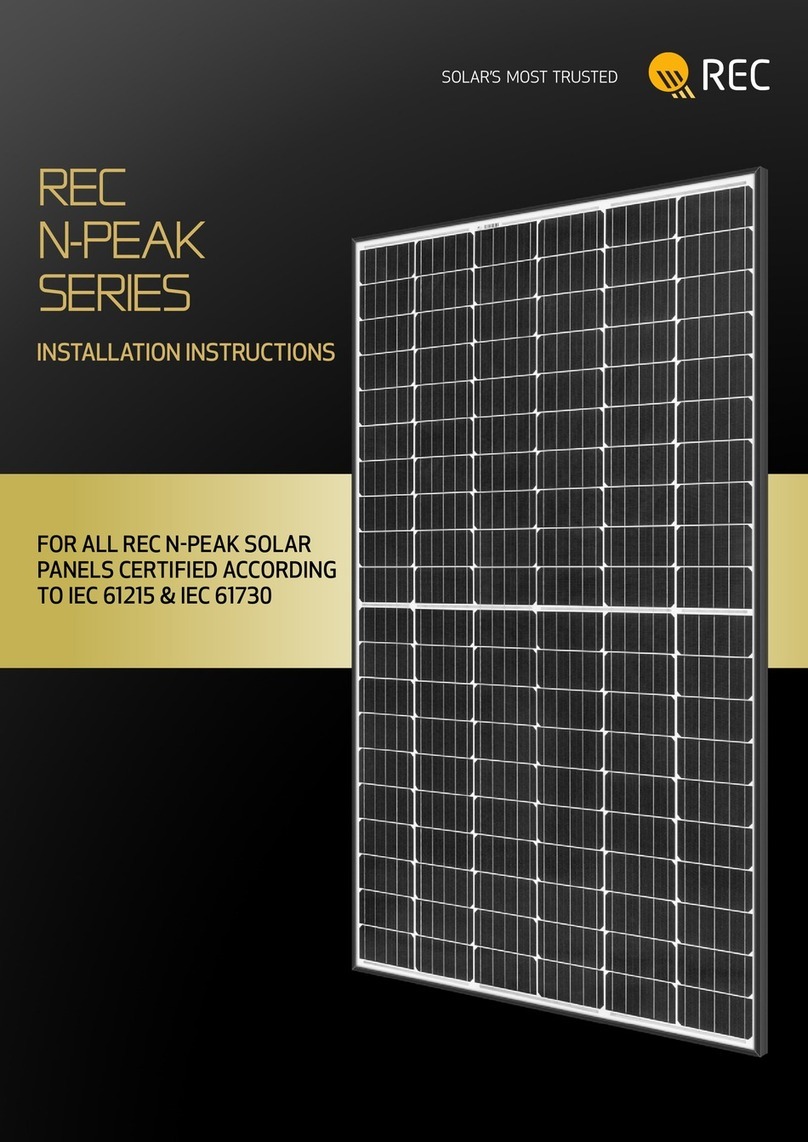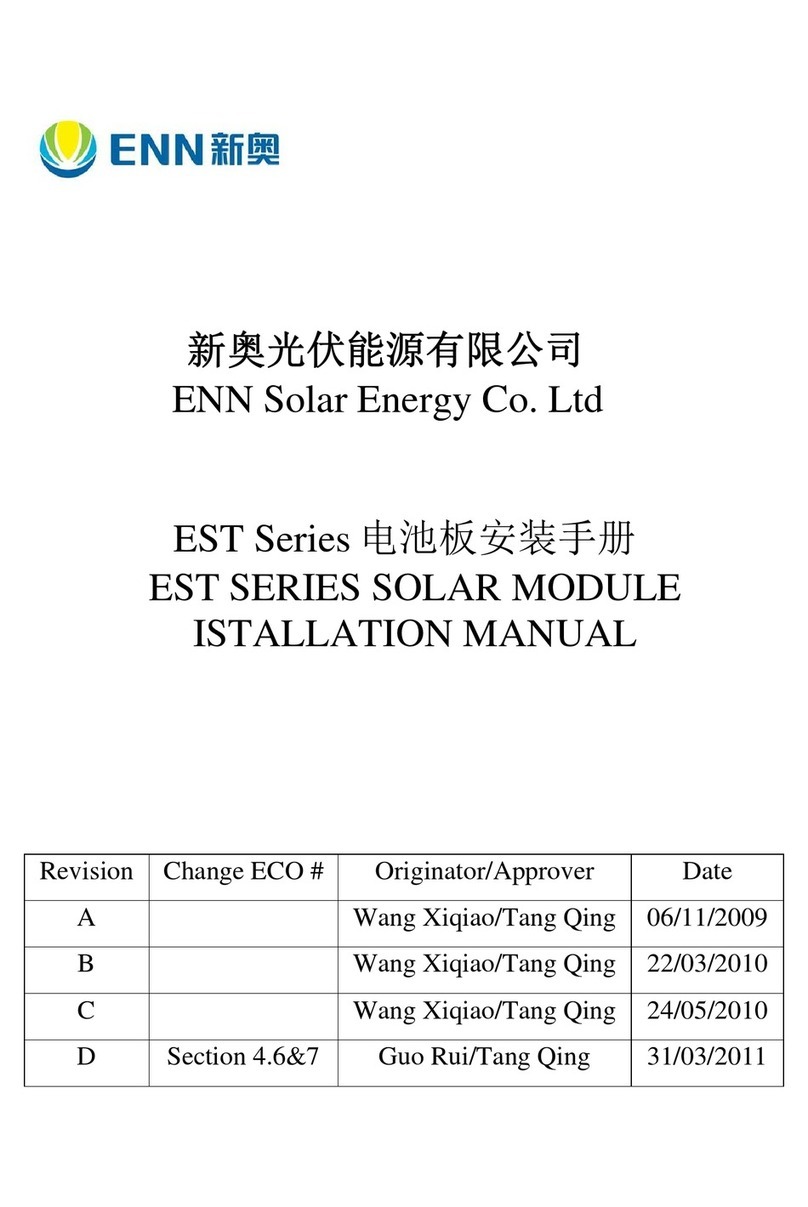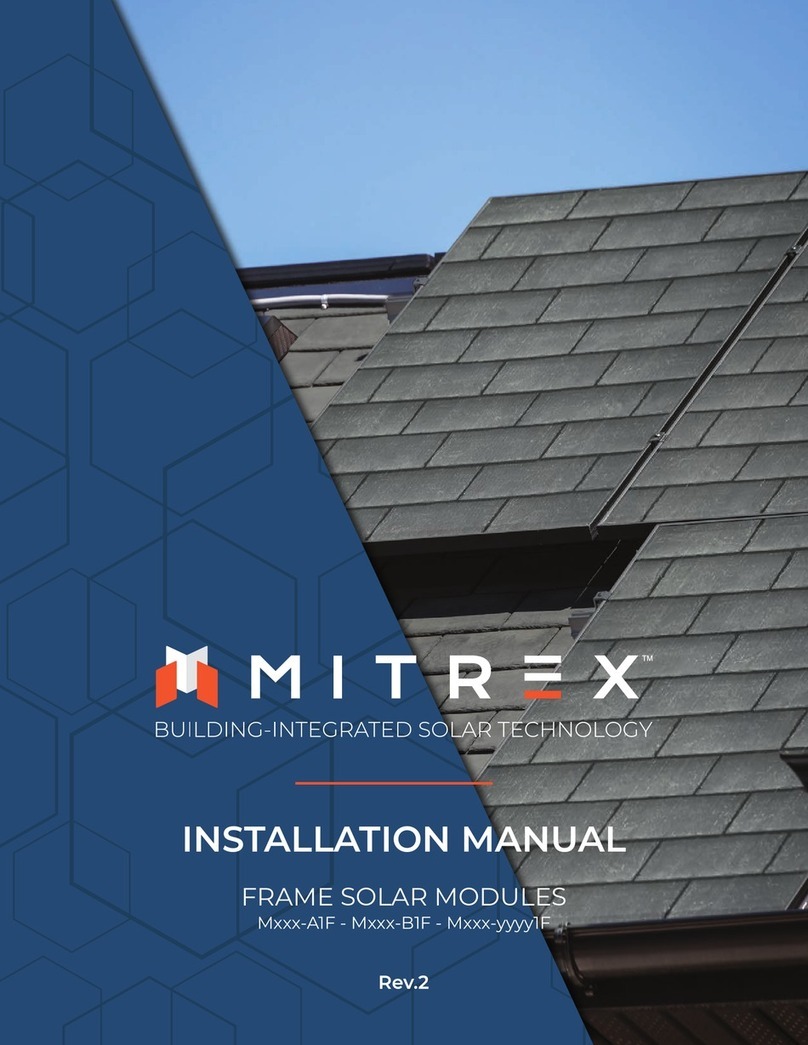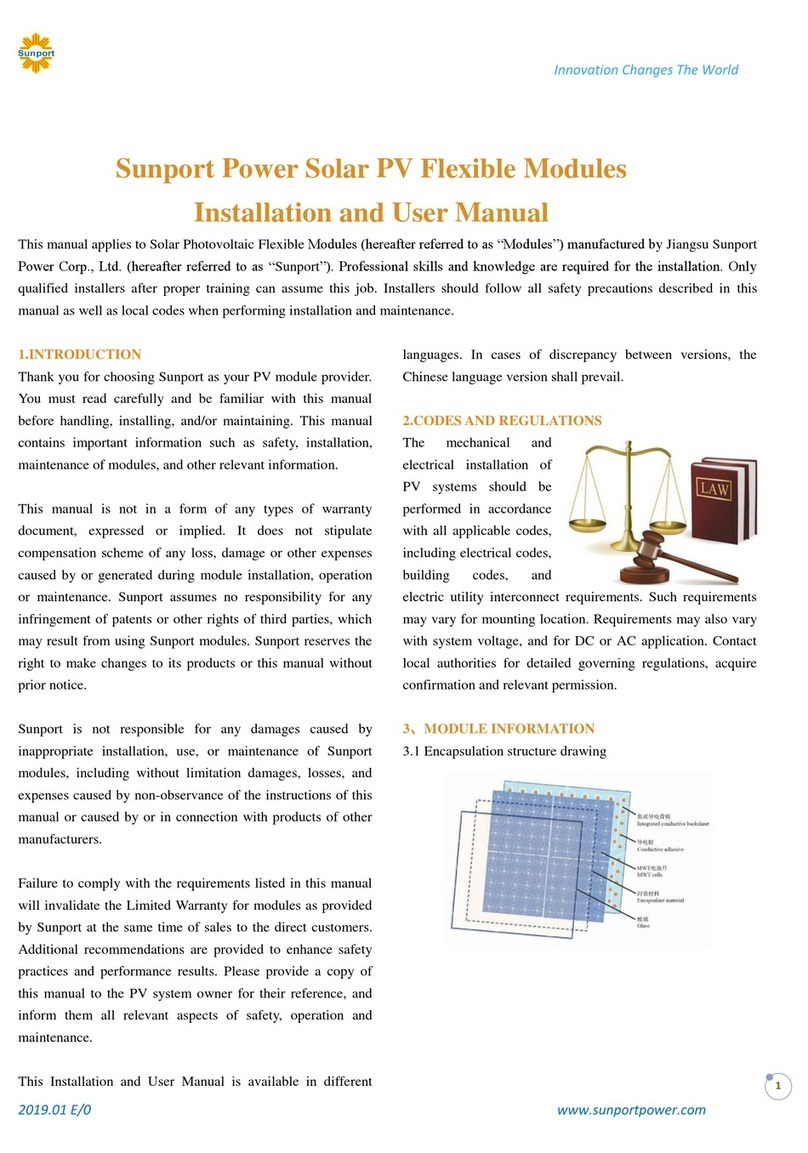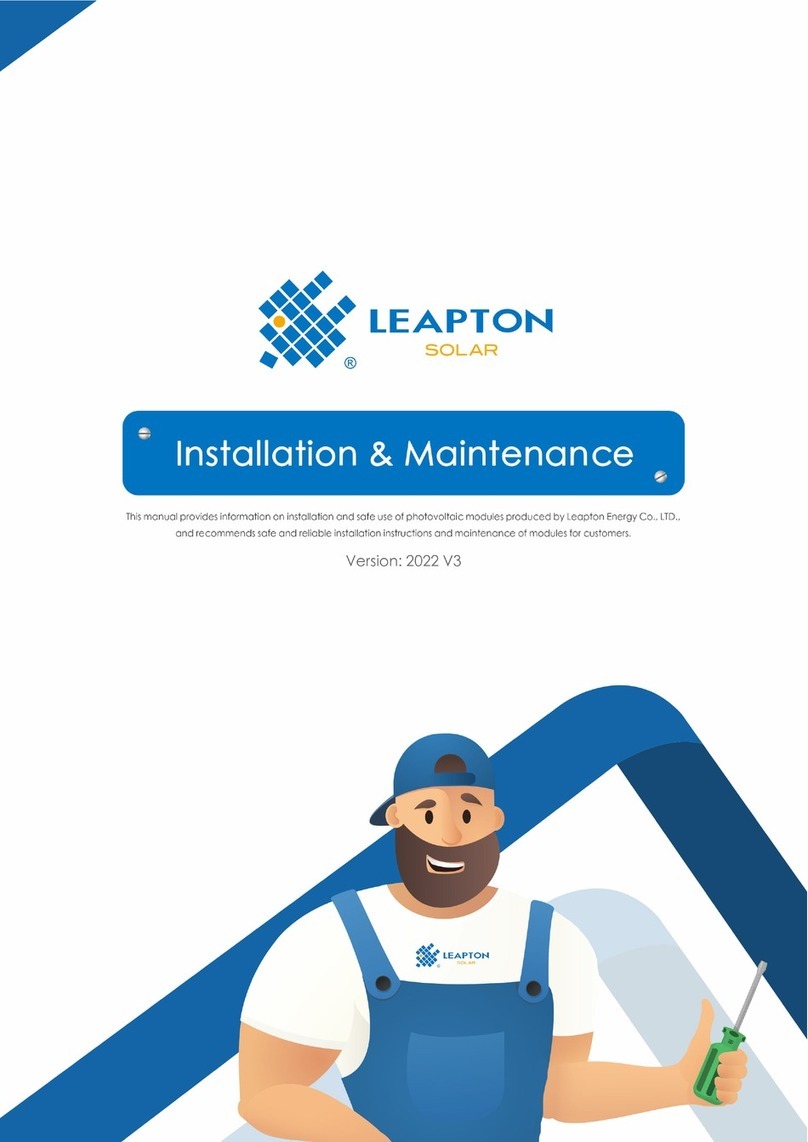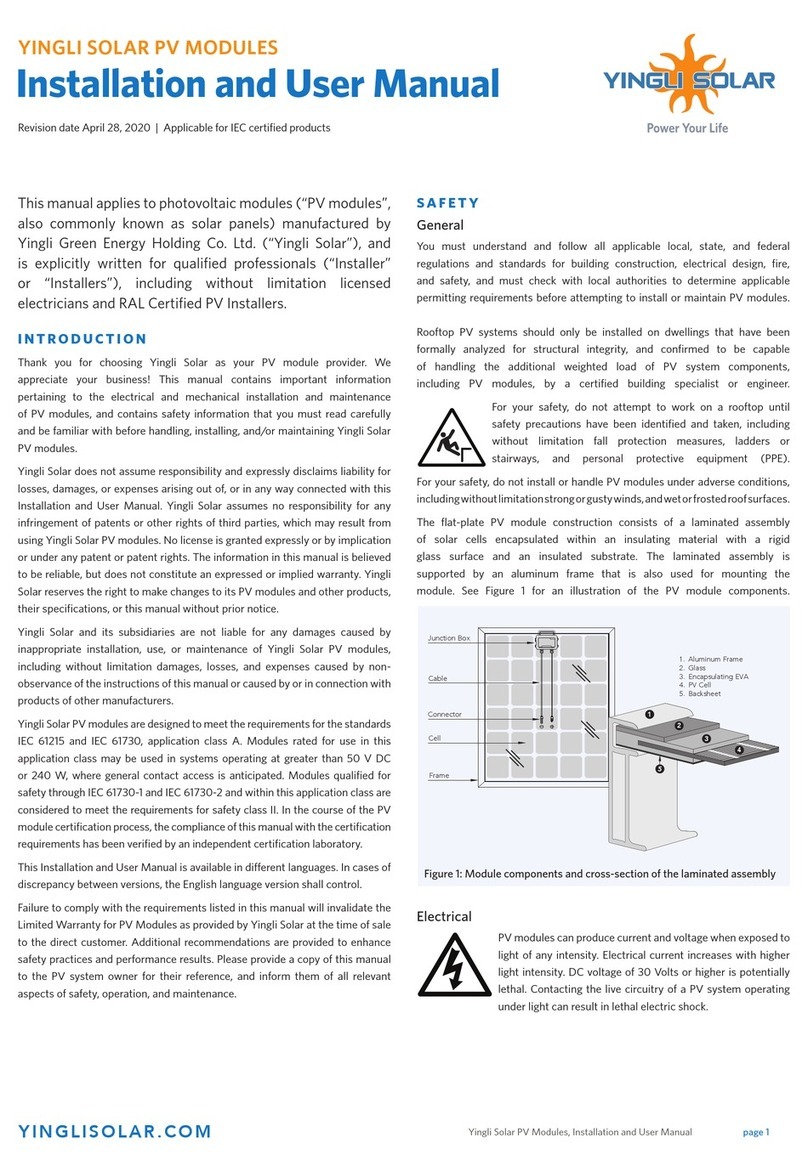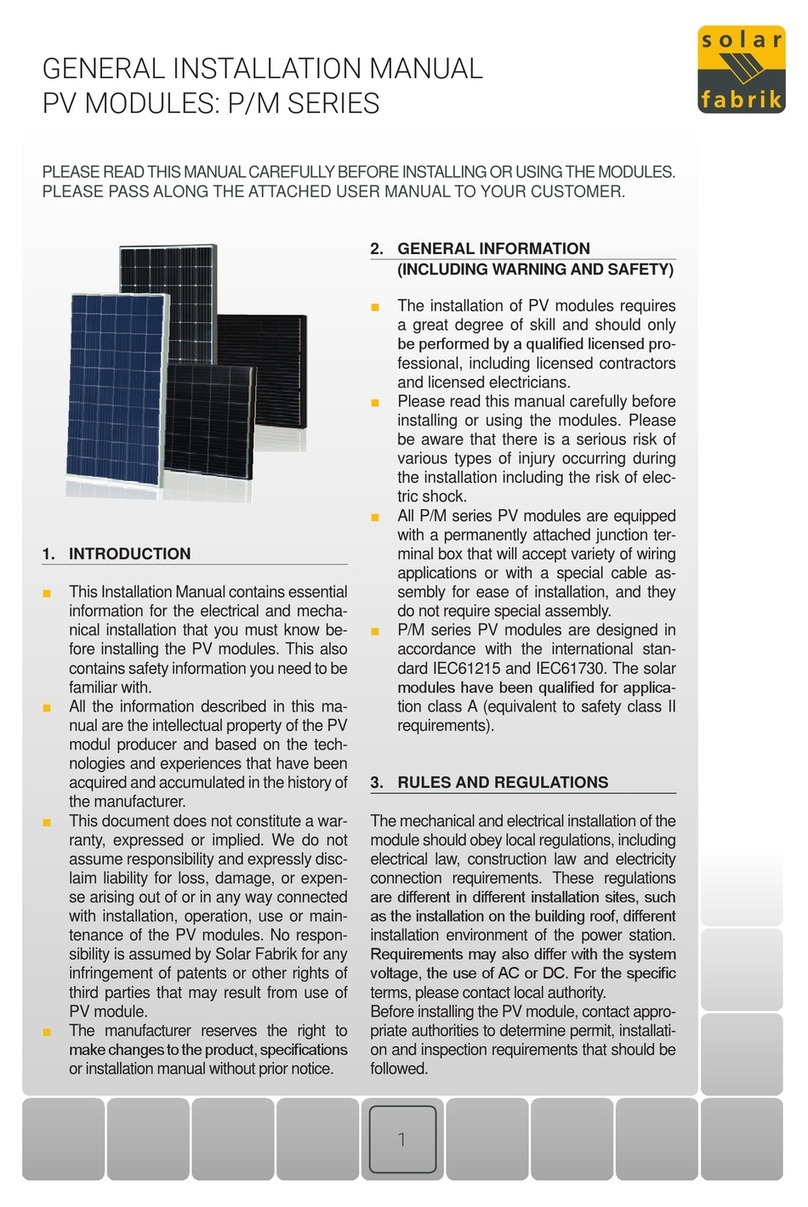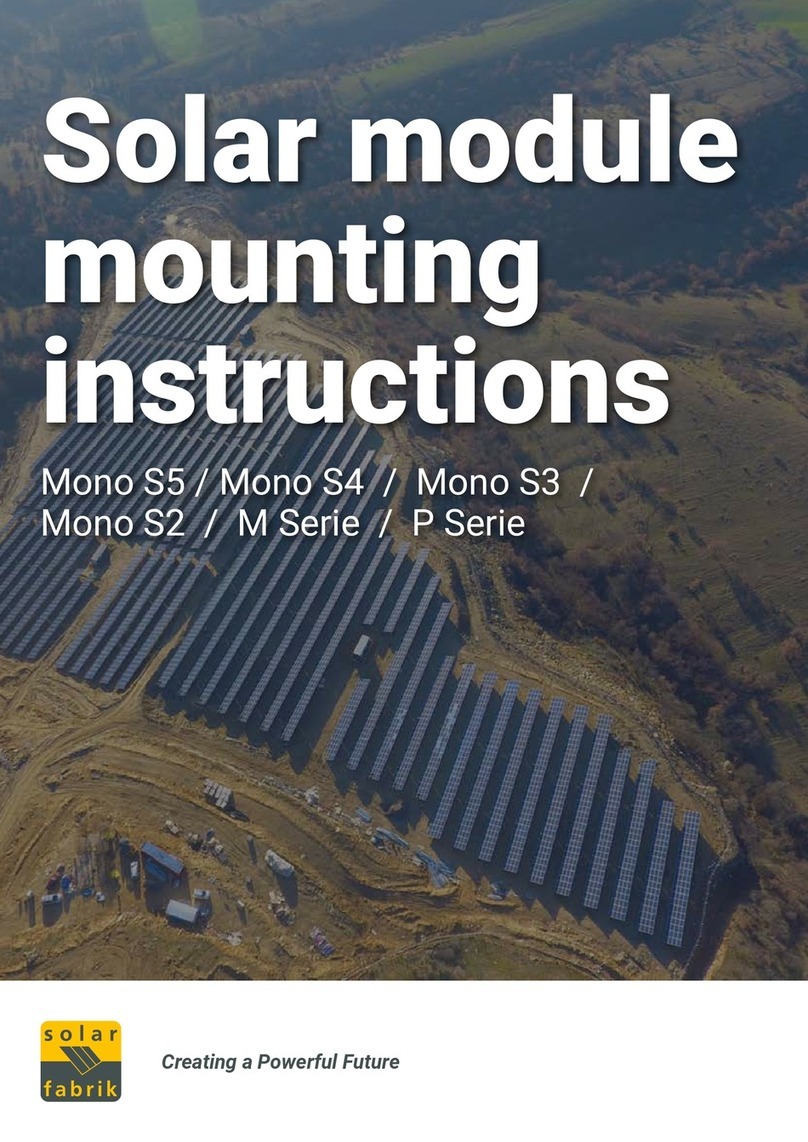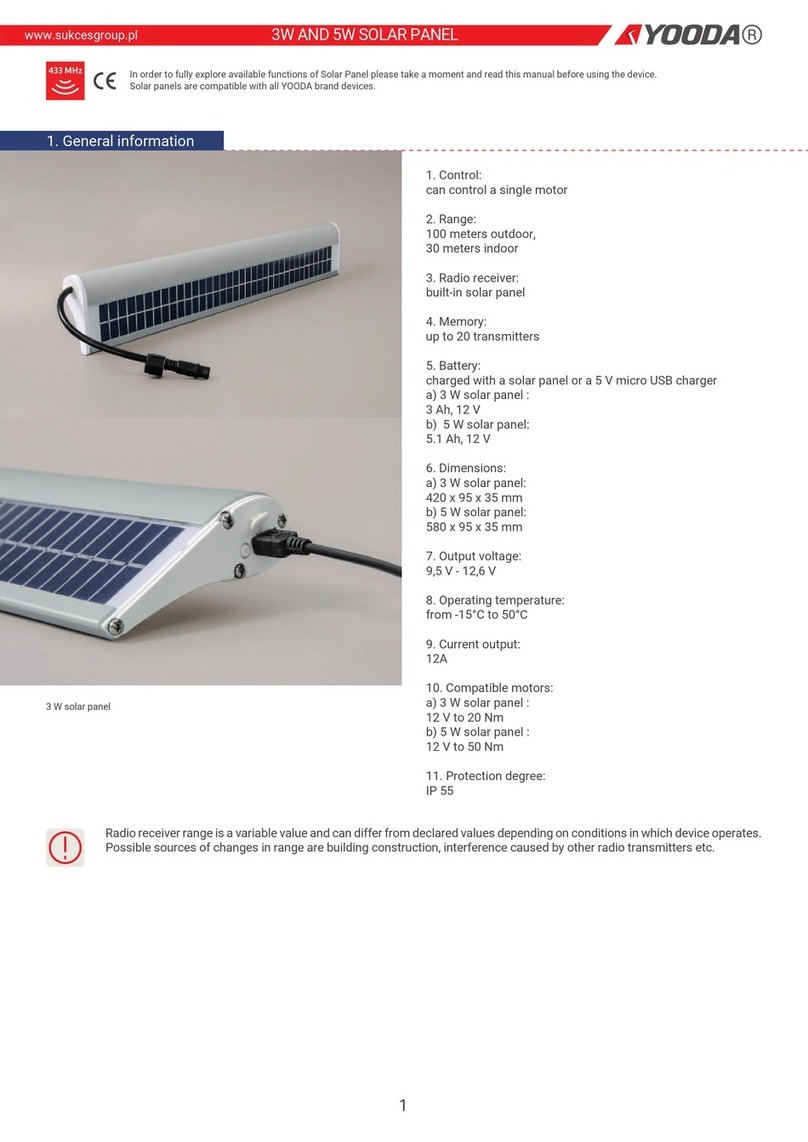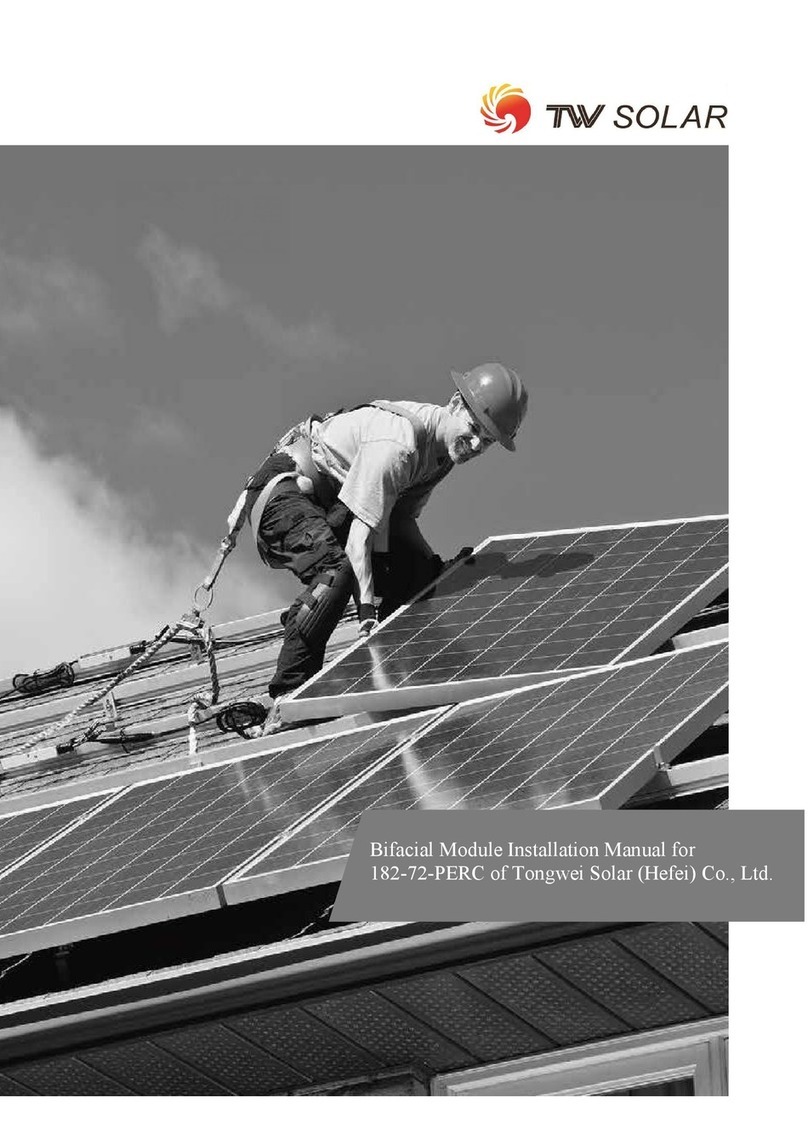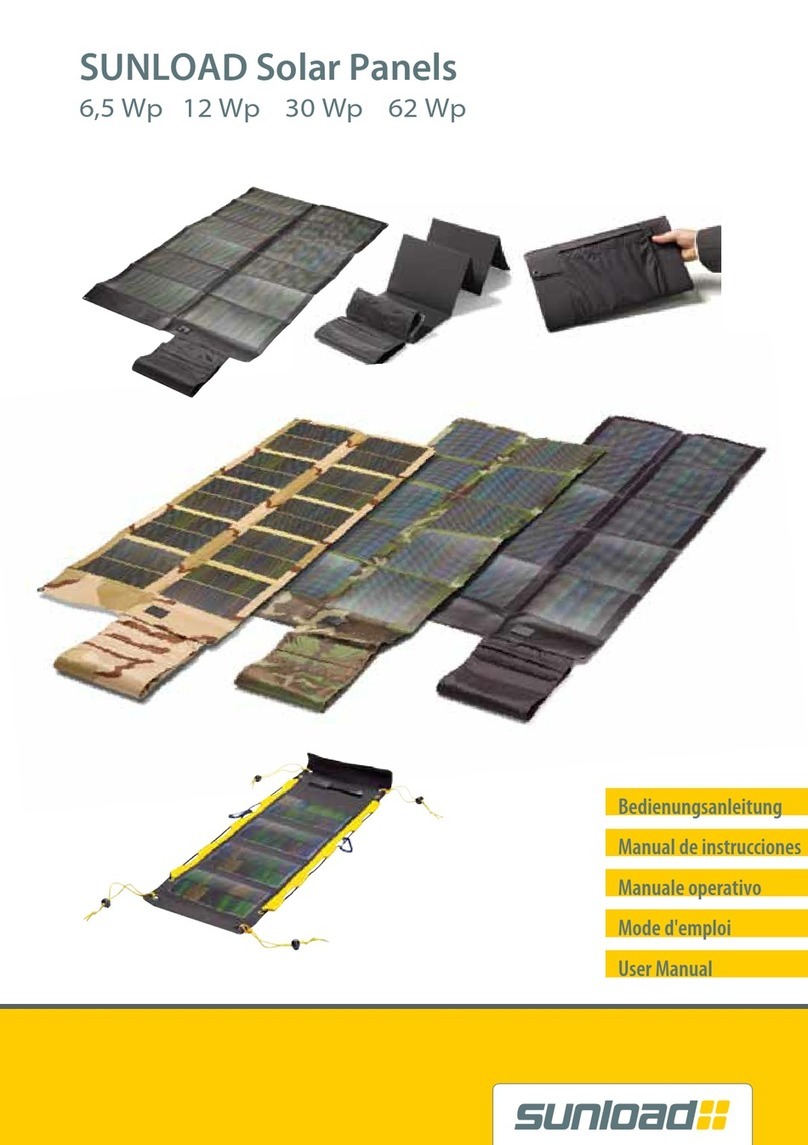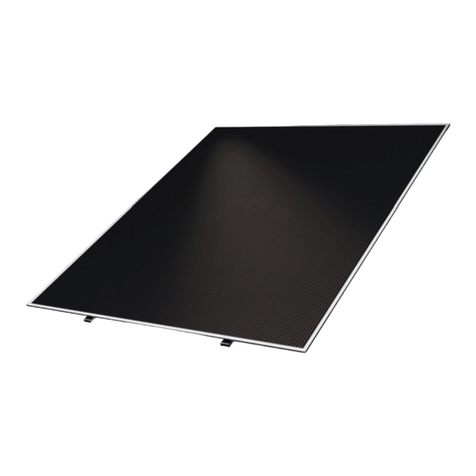
7
Solar module mounting instructions
Mono S3 ▪Mono S2 ▪M series ▪P series
Correct handling of AR glass modules
The nano-porous coating on the glass surfaces of
the solar module reduces reection losses. Compa-
red to uncoated glass, a deviation of the irradiation
angle from the vertical can result in an angle-de-
pendent transmission of up to 2 % more power. To
maintain this eect and to avoid visual impairments,
we urgently recommend observing the following in-
structions:
■ Handle the modules with care due to the coa-
ted glass.
■ Handle the modules with care when unpacking
and mounting. We recommend only touching
the surfaces with clean gloves because the
special reective properties make light soiling
easier to detect. Especially grease and oil are
visible even in small quantities and can inu-
ence the transmission.
■ We advise against attaching stickers or labels
to the coated surface. Depending on the ma-
terial used, this can result in very ne residues
that are dicult to remove.
■ In rare cases, there may be visible white resi-
dues of the coating uid and colour variations
in the edge area (≤ 5 mm). These are fully fun-
ctional modules and there is no reduction in
quality.
■ If it is necessary to clean the modules due to
heavy soiling, we recommend the following
procedure:
+ Clean the modules when they have cooled down
(e.g. during the morning hours)
+ For moderate to strong residues, we recommend
cleaning with lukewarm, de-mineralised water and
clean, lint-free cotton cloths, microbre cloths or pa-
per towels
+ For particularly heavy and stubborn soiling, we
recommend detergents containing surfactants
+ Avoid cleaning with strong acids, alkaline solu-
tions, petrol-based cleaners, steam and hot clea-
ners, cleaners with silicone oils, uorides or waxes,
polishes, alkaline cleaners and cleaners with scou-
ring agents and high-pressure cleaners
Ensuring comprehensive re protection
Under certain circumstances, the installation of
roof-mounted systems can have an impact on the
re safety of a building. Improperly executed ins-
tallations in particular can lead to a re hazard. Th-
erefore always install the modules of a roof-moun-
ted system above a re-resistant substrate. As the
modules are not explosion-proof equipment, do not
install the modules near highly ammable gases
and vapours, e.g. in the vicinity of gas containers,
paint spraying systems or lling stations. Also, do
not install the modules next to naked ames and
ammable materials.
Ensuring a suitable environment
The modules are primarily intended for use in mo-
derate climatic conditions. Make sure they are not
exposed to articially concentrated sunlight, sub-
merged or continuously exposed to splashing water
at their destination. There is a risk of corrosion if the
modules are subject to exceptional loads of salts or
sulphur.
Suitable installation situation
It is of utmost importance that the module meets the
technical requirements of the overall system. The-
refore, make sure that no damaging mechanical or
electrical eects (e.g. overvoltage) are exerted on
the module by other system components. When
connected in series, only modules of the same am-
perage may be used; when connected in parallel,
only modules with the same voltage may be used.
The modules may only be operated with the permis-
sible system voltage; operation with a higher volta-
ge is not intended.















